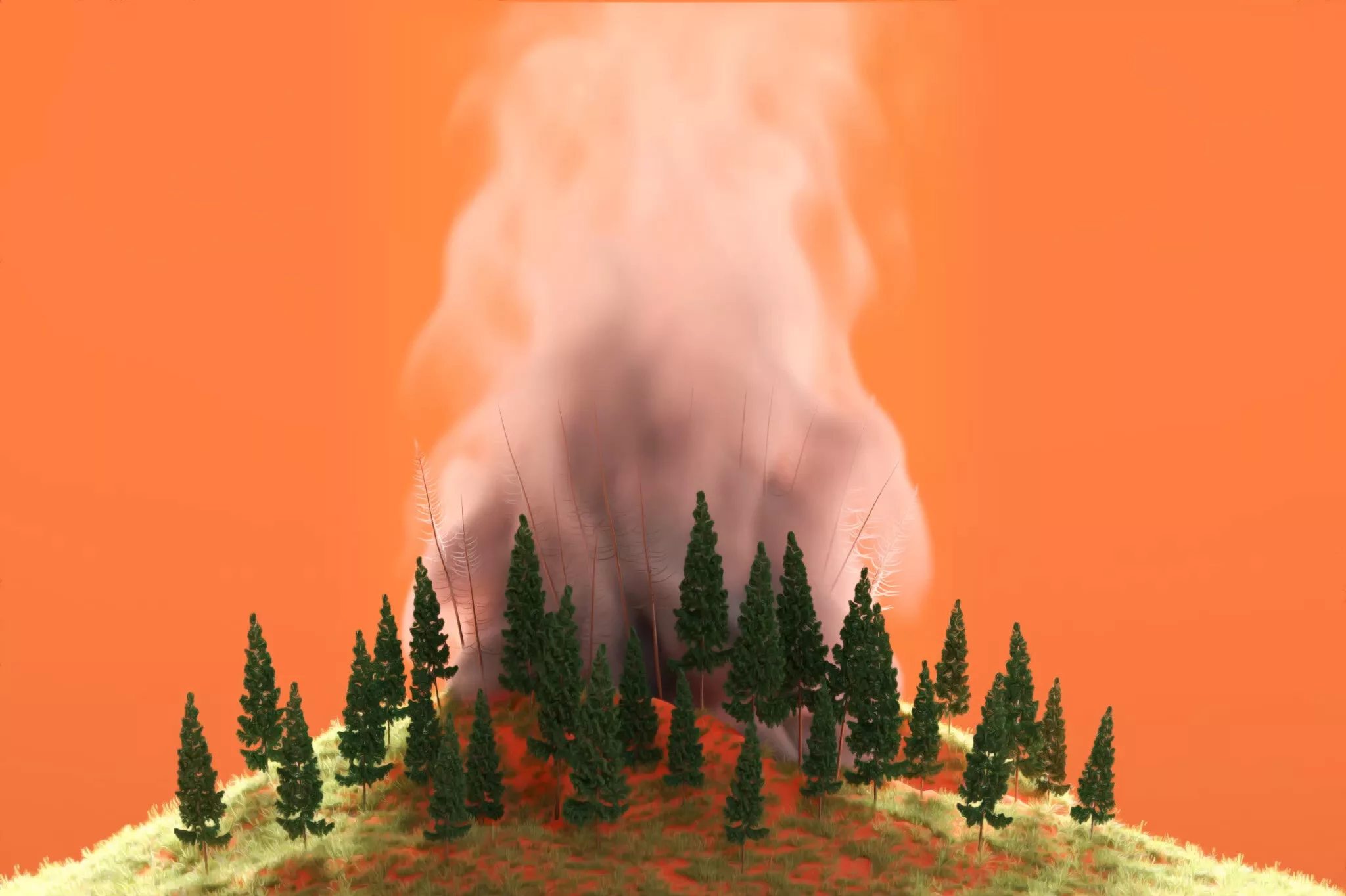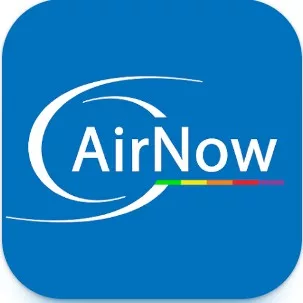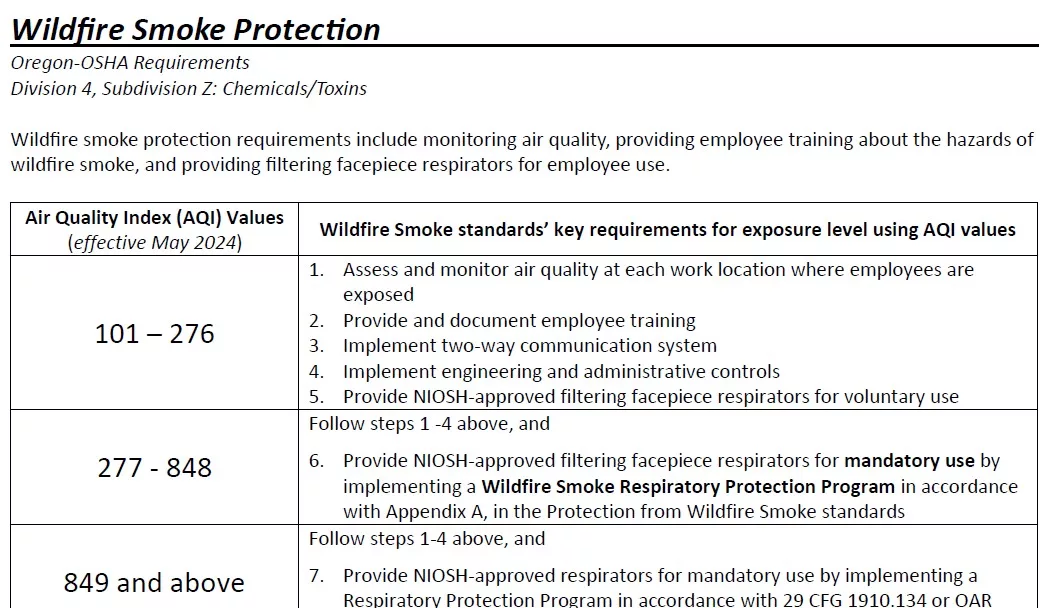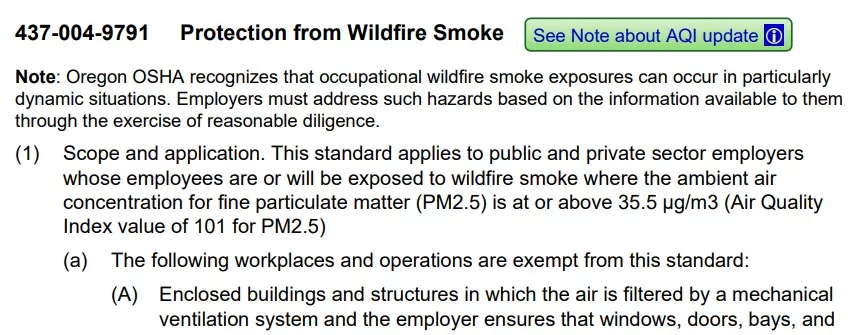
Wildfire Smoke Protection
Oregon-OSHA Requirements
Division 4, Subdivision Z: Chemicals/Toxins

U.S. EPA Air Now Fire and Smoke Map
Monitor air quality index using the following websites:
Oregon DEQ Air Quality Monitoring
U.S. EPA AirNow Fire and Smoke Map
Or, download the DEQ AQI or EPA AirNow apps from your mobile app store.
Employers can also directly measure workplace ambient air concentration for PM2.5 by purchasing and using a calibrated measuring device and following the manufacturer’s instructions.
Training must include:
- The symptoms of wildfire smoke exposure, including:
- Eyes: burning sensations, redness, and tearing of the eyes caused by irritation and inflammation that can temporarily impair vision
- Respiratory System: runny nose, sore throat, cough, difficulty breathing, sinus irritation, wheezing, and shortness of breath
- Fatigue: headache, irregular heartbeat, and chest pain
- The potential acute and chronic health effects from wildfire smoke exposure, including increased health risks to sensitive groups, and how chronic exposures can increase the risk of cardiovascular disease and can exacerbate asthma
- Each employee’s right to report health issues related to wildfire smoke exposure and obtain medical treatment for such workplace exposures without fear of retaliation.
- How employees can obtain the current average and forecasted ambient air concentration for PM2.5 and equivalent AQI value for their work location.
- The importance, limitations, and benefits of using a filtering facepiece respirator, which is provided by the employer at no cost to the employee to reduce exposure to wildfire smoke, and how to use and maintain their filtering facepiece respirator.
- The employer’s methods to protect employees from wildfire smoke, including how filtering facepiece respirators are required to be made readily accessible to employees for voluntary use, and how employees can obtain such respirators before exposure and replace them when needed.
- Review of any job tasks performed by employees in which the use of a filtering facepiece respirator would expose the wearer to a hazard associated with a substantially more serious injury of illness than the potential acute health effects of wildfire smoke exposure.
- The procedures supervisors must follow when an employee reports or exhibits health symptoms that necessitate immediate medical attention, including, but not limited to, asthma attacks, difficulty breathing, and chest pain.
- How to operate and interpret exposure results based on any PM2.5 monitoring device used by the employer in compliance with the standard.
- An explanation of the employer’s two-way communication system for wildfire smoke exposure control information.
This communication system must:
- Communicate to employees when there are changes in the air quality that would require a change in exposure controls (use of respirators, etc.).
- Allow employees to report issues concerning their access to exposure controls and any health symptoms from wildfire smoke exposure that may require medical attention.
- Methods of communication may include (but are not limited to): in-person, cell phone, and two-way radio.
This includes controls that are functionally possible and would not prevent the completion of work:
- Relocating outdoor workers to enclosed buildings or to outdoor locations where the air quality is better.
- Making work schedule changes to reduce employee exposures.
- The use of these controls may be used in combination with NIOSH-approved filtering facepiece respirators.
Respirators for voluntary protection must be distributed directly to employees or be made readily accessible to any exposed employee at each work location.
NIOSH-approved respirators appropriate for wildfire smoke protection include:
- N95, N99, and N100
- R95, R99, and R100
- P95, P99, and P10
When the AQI is 277 – 848, respirators are mandatory.
Respirators must either be NIOSH-approved for wildfire smoke protection OR follow OSHA’s Respiratory Protection standard.
NIOSH-approved respirators appropriate for wildfire smoke protection include:
- N95, N99, and N100
- R95, R99, and R100
- P95, P99, and P10
OR provide respirators that require medical evaluations and fit testing (following OSHA’s Respiratory Protection Standard)
When the AQI is 849+, respirators that follow OSHA’s Respiratory Protection Standard must be used (respirators that are NOT disposable and require medical evaluation and fit testing).

Printable Wildfire Smoke Protection Summary
A printable PDF summary of OR-OSHA’s wildfire smoke protection rules.

OR-OSHA Division 4 Rule Text: Wildfire Smoke Protection
Read OR-OSHA’s Division 4 rules about wildfire smoke protection.

Wildfire Smoke Online Course
OR-OSHA’s wildfire smoke online course will satisfy the following employee training requirements:
- Symptoms of wildfire smoke exposure
- Potential health effects of wildfire smoke exposure
- Employee’s rights
- How to access air quality data
- The importance, limitations, and benefits of using a filtering facepiece respirator
Available in English and Spanish.

